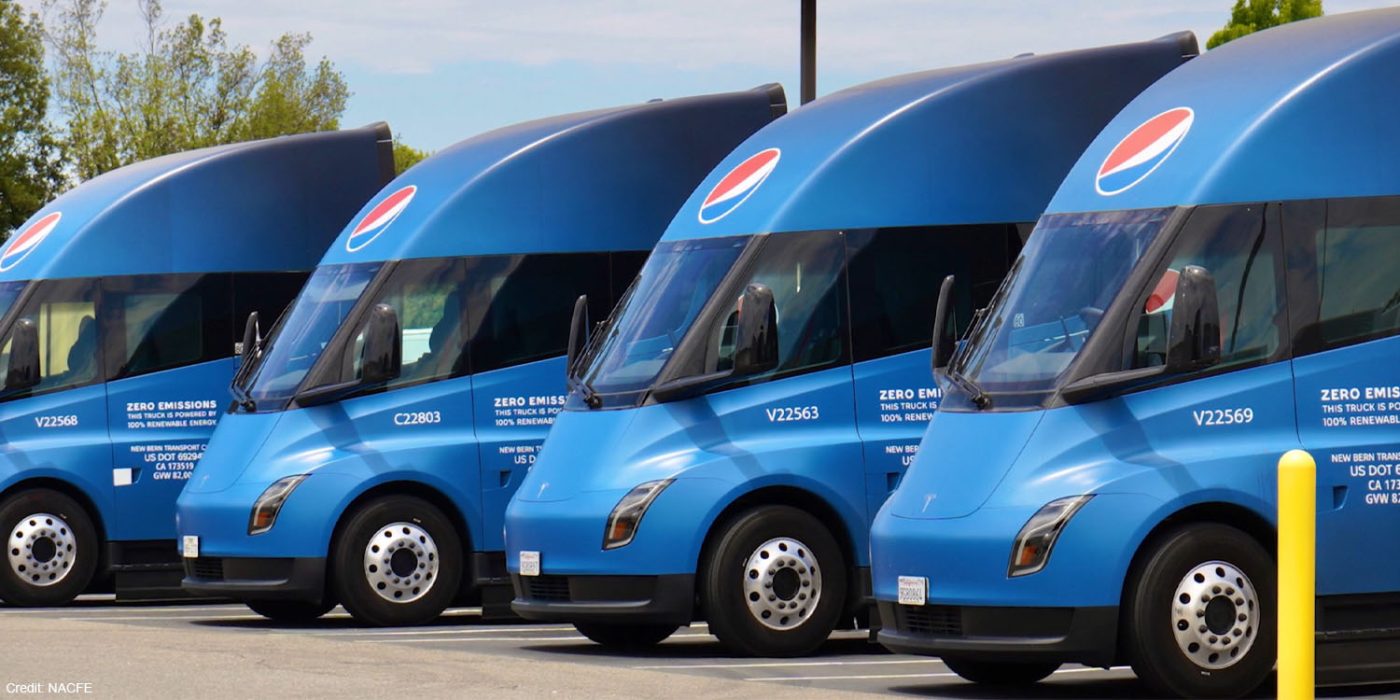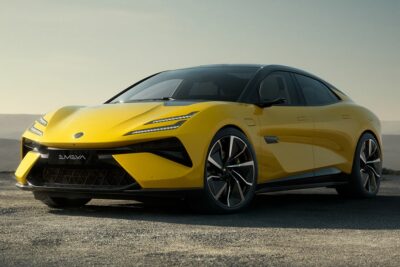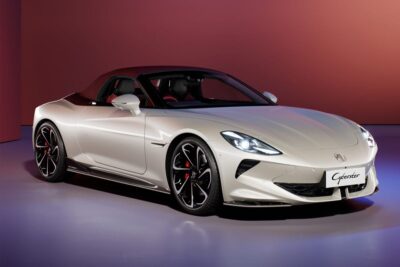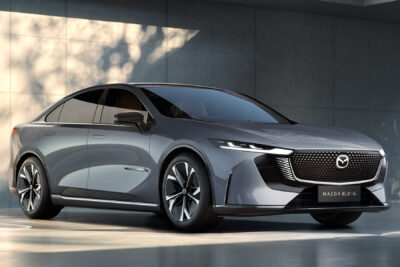PepsiCo cites consumption of 1.1 kWh/km for Tesla Semi
PepsiCo uses 21 Tesla Semis in a bottling plant in Sacramento, California. In a video, the beverage company provided some insights into the daily logistics routine with the all-electric vehicles of the US Class 8, including statements on consumption, recuperation or the range of the Tesla truck, which is still largely unclear concerning its technical data.
***
In the video, which was produced by the North American Council for Freight Efficiency (NACFE), only representatives of PepsiCo and the local energy provider Sacramento Municipal Utility District (SMUD) are interviewed, while Tesla representatives do not weigh in. The EV manufacturer has delivered only a small number of its Semi electric truck, most of which have likely gone to PepsiCo.
The beverage company was the first to order the Tesla Semi about five and a half years ago. In April, PepsiCo was also the first company to present the electric truck as a fleet vehicle in its company design. Tesla started deliveries of the Semi at the beginning of December 2022. The manufacturer itself does not provide an update on its deliveries. However, Teslamag reports, with reference to a recall by the US authority NHTSA from June, that PepsiCo probably received 36 of the 100 Semis ordered so far: 15 are in operation at Frito-Lay in Modesto, California, and 21 at the primary location in Sacramento.
The camera in the NACFE video is pointed at the latter 21. It confirms that the Sacramento location has installed four Tesla chargers with a charging capacity of 750 kW each. They are supposed to allow charging to 80 per cent in less than 45 minutes. Elsewhere in the video, it is said that the Semi can charge from 5-10 per cent to 95 per cent in 20 to 30 minutes.
PepsiCo uses 18 of the 21 Tesla Semis for deliveries within a 100-mile radius (about 161 kilometres) with multiple stops – in shifts of up to twelve hours. According to Amanda DeVoe, Transformation and Strategy Director at PepsiCo, using electric vehicles for these short trips between the company’s bottling warehouse in Sacramento and delivery locations is particularly useful. However, according to Dejan Antunovic, head of the electrification programme at PepsiCo, the remaining three units will definitely be used for long distances of 250 to 450 miles (about 400 to 725 kilometres). Tesla officially says the electric truck has a range of 500 miles (over 800 kilometres) when fully loaded.
Another feature worth mentioning is the Tesla Semi’s recuperation. Antunovic says that the Tesla truck can drive energy-neutrally on the way back from the Donner Pass in the Sierra Nevada by recuperating braking energy. A concrete efficiency value also drops: the programme manager states that PepsiCo achieves an average efficiency of 1.7 kWh per mile with the Tesla Semi, the equivalent of 1.1 kWh per kilometre. The Tesla website speaks of “less than 2 kWh per mile.”
What else is known about the Tesla Semi was summarised here in December 2022. The most important confirmed news on the occasion of the delivery start in winter was that the battery can be charged with up to 1 megawatt thanks to a 1,000-volt system. Consequently, the chargers with a maximum of 750 kW would be the limiting factor in Sacramento – and not the vehicle. Like the Plaid versions of the Model S and Model X, the Tesla Semi has a drive system consisting of three electric drives, one for the most efficient constant speed and the other for acceleration. As mentioned, the truck is said to be able to go up to 500 miles on one charge, even when fully loaded.
Tesla is still not giving a price for the Semi, nor any other official details on the payload, the battery capacity, the performance of the drive system, or when large-scale production will begin. Tesla started production of the first units in October 2022. In the USA, the Semi falls into truck class 8 with a gross vehicle weight of up to 80,000 lbs (around 36.3 tonnes). Electric trucks can exceed this limit by another 2,000 pounds, which translates to 37.2 tonnes. A few months ago, Tesla stated that it had demonstrated the 500 miles mentioned above with a fully loaded, 82,000-pound Semi.
However, the tare weight (which determines the payload) remains a mystery. As the US portal Electrek explained in an earlier report, Class 8 trucks can weigh between 12,000 and 25,000 lbs (around 5.4 to 11.3 tonnes), and the payload varies accordingly.
The price of the electric truck also remains unknown. Shortly after the prototype was unveiled in 2017, Tesla quoted an “expected base price” of 150,000 dollars for the basic Semi model. At the time, $180,000 was quoted for a range-extended variant and $200,000 for the “Founders Series” version. Since then, Tesla has not commented on its price expectations.
More information on the Semi could follow in September. The organisation NACFE, which produced the video, is hosting an annual test drive called “Run on Less” – and in this year’s edition, data on the Tesla Semi will be publicly recorded for the first time.






24 Comments